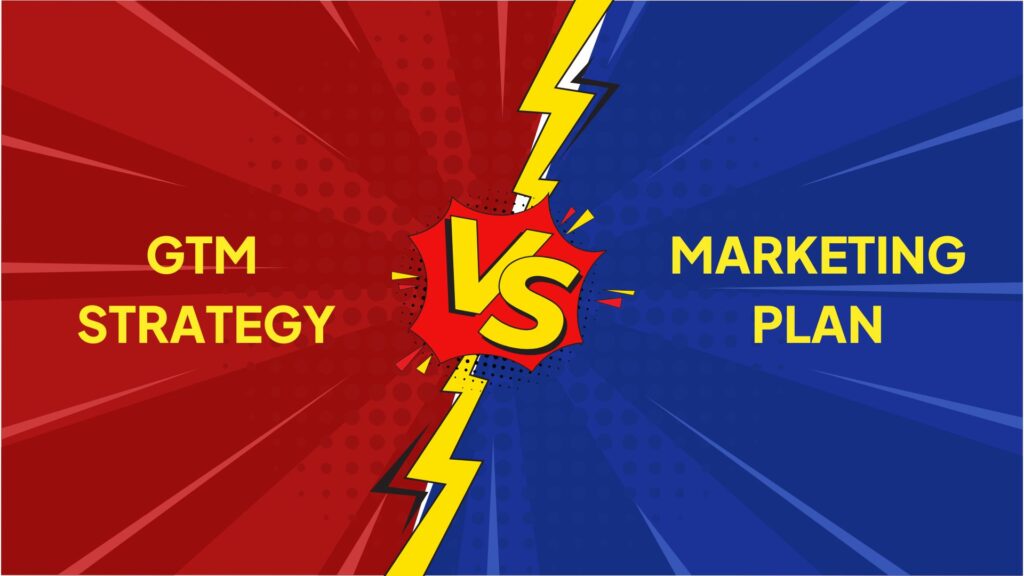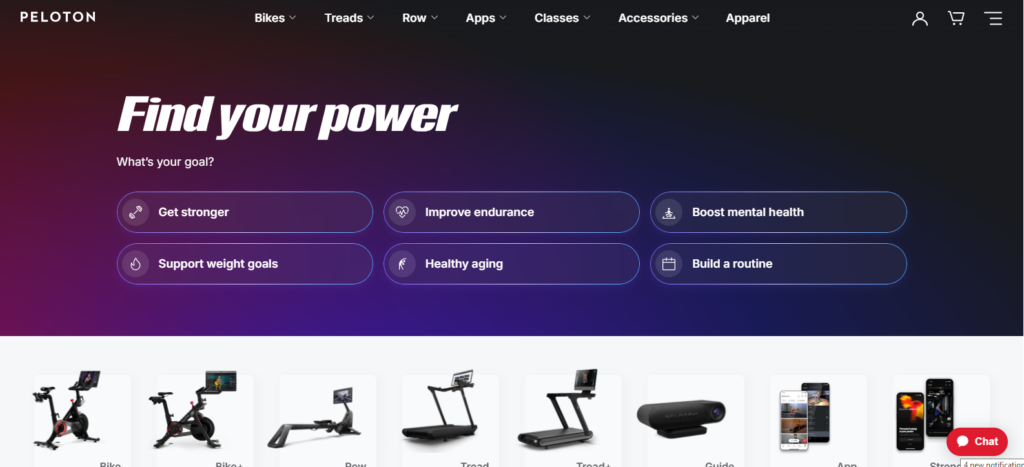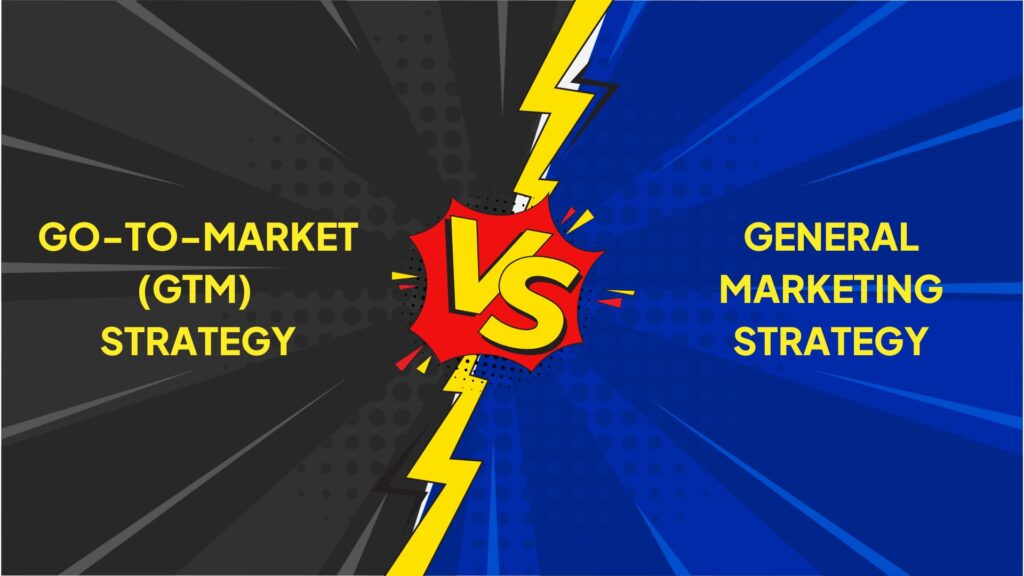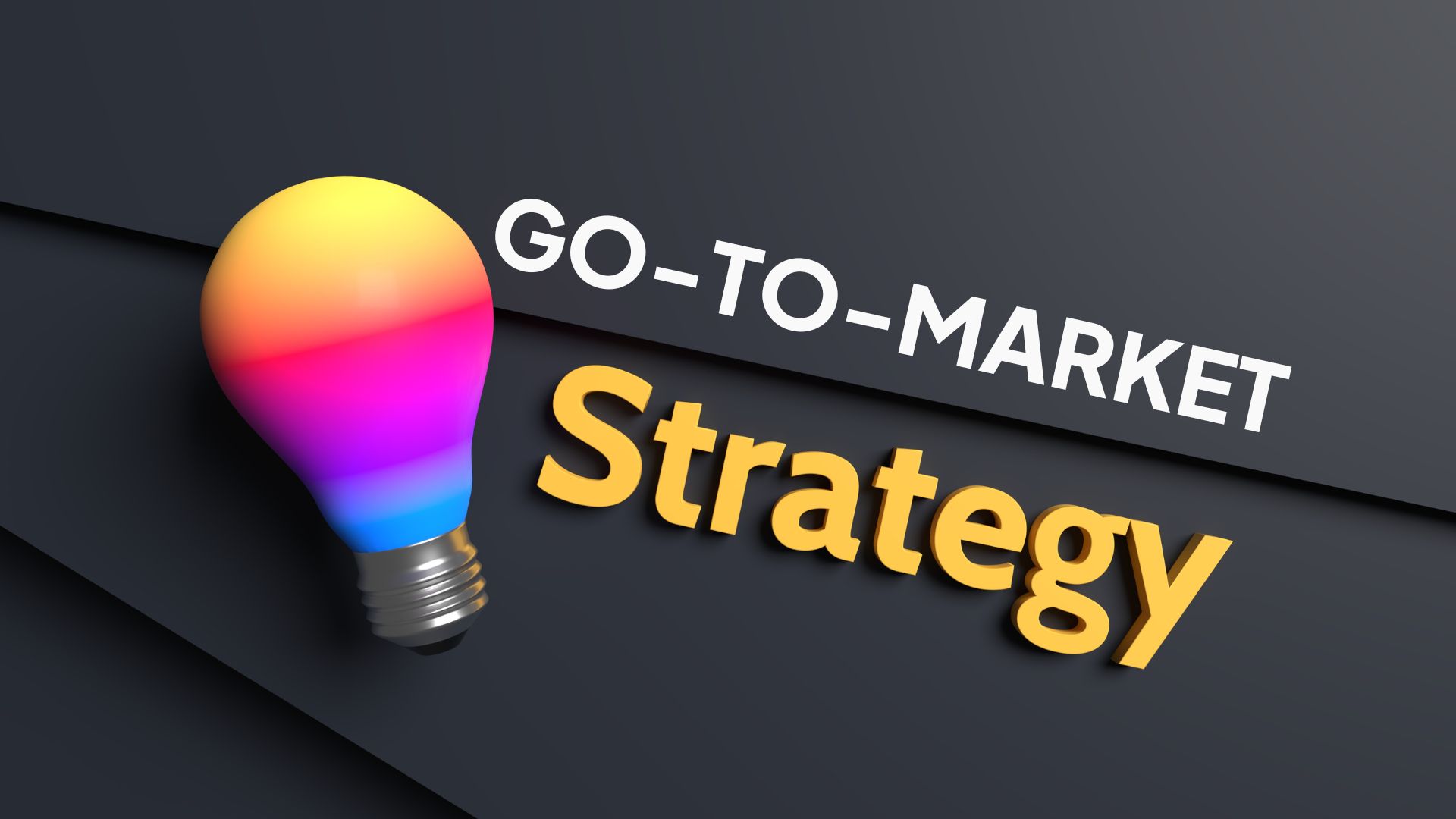Launching a new product or service can feel like navigating a maze. You have a great idea, but how do you actually get it into the hands of the people who need it? This is where a Go-To-Market Strategy becomes essential. Think of it as your detailed map for successfully introducing your offering to the world. It’s not just about having a fantastic product; it’s about having a clear plan to reach your customers, communicate its value, and make the launch a success. This guide will explore what a Go-To-Market strategy is, why it’s crucial, and how you can create one to pave the way for a smooth and impactful launch.
Table of Contents
What is Go-To-Market Strategy?

A Go-To-Market (GTM) strategy is simply a plan for how a company will sell a product or service to customers. It’s like a roadmap that helps businesses reach the right people, at the right time, with the right message.
Think of it as answering these key questions:
- Who are our customers?
- What do they need?
- How will we tell them about our product?
- Where will they be able to buy it?
- How much will it cost?
A good GTM strategy helps a company launch successfully, avoid mistakes, and ultimately sell more of their product or service.
Who Needs a Go-To-Market Strategy?
Short answer? Pretty much anyone launching something new.
Doesn’t matter if you’re:
- A tiny startup with your first big idea
- A huge company dropping a new service
- Someone bringing an existing product to a fresh market
- If you’re introducing something new, you need a plan.
Let’s break down:
- Startups launching their first product – This stage is critical. A misstep can mean failure.
- Established companies introducing something new – Even industry leaders need a strategy to avoid costly mistakes.
- Businesses entering new markets – Success in one region doesn’t guarantee the same results elsewhere.
- Teams rolling out new features – Even minor product updates require a structured approach for a smooth launch.
What is the Go-To-Market Model?
The Go-To-Market Model is like a game plan for selling your product. Think of it as a detailed playbook that shows exactly how a business will bring its product to customers. It’s not just about making something great – it’s about making sure the right people know about it and want to buy it.
Key Things to Know About the Go-To-Market Model:
- Big Picture Planning: It’s a complete strategy that covers everything from understanding your customers to how you’ll sell your product
- Custom-Made Approach: Every business has a different model based on their product, market, and customers
- Connects the Dots: Links product development with actual sales and marketing efforts
- Reduces Guesswork: Gives a clear path instead of hoping something will work
What the Model Helps You Figure Out:
- Who are your ideal customers?
- What makes your product special?
- How will you reach potential buyers?
- What’s the best way to sell your product?
- How much should you charge?
The Important Role of Go-To-Market Strategy in Product Marketing
A Go-To-Market (GTM) strategy is key for launching a product. It aligns how you present your product. This ensures it matches what it does and what people need. It helps define the best way to talk about it. It highlights what makes it special. It shows how it’s different. Sales and marketing teams work together. They are aligned from awareness to adoption. This plan guides how to introduce the product.
Enroll Now: Live Product Marketing Course
Who is Responsible for a Go-To-Market Strategy?
It’s not just one person’s job. A team collaborates on the GTM. This includes product experts, marketing specialists spread the word, sales teams know how to sell it. Everyone must be on board. This plan is like a map for success. It helps find the right customers. It figures out how to explain the product. It decides the best way to sell it. It also ensures everyone works toward the same goal. This is very important.
Here are some quick things to know about it:
- It helps you find the right customers.
- It tells you how to explain your product to them.
- It helps you figure out how to sell it.
- It makes sure everyone is working towards the same goal.
What are Go-To-Market Roles?
When a company has a Go-To-Market strategy, different people have specific jobs to make sure the plan works well. Here are some of the important roles:
- Product Manager: The brain behind the product. Figures out what customers actually want and makes sure the product delivers.
- Marketing Specialist: The storyteller. Creates the message that will make people sit up and take notice.
- Sales Manager: The deal closer. Teaches the sales team everything they need to know to sell effectively.
- Customer Support Lead: The safety net. Ensures customers get help when they need it.
GTM Strategy vs. Marketing Plan: What’s the Difference?

It’s easy to get the terms “Go-To-Market Strategy” and “Marketing Plan” confused, as they are related. However, there are some key differences:
| Feature | Go-To-Market Strategy | Marketing Plan |
| Focus | Launching a new product, service, or entering a new market | Ongoing marketing activities for a product or brand |
| Timeline | Typically focused on the period leading up to and after launch | Covers a longer period, often a year or more |
| Scope | Broader, includes sales, distribution, and customer support | Primarily focused on marketing and communication activities |
| Goal | Successful product launch and initial market penetration | Achieve marketing objectives like brand awareness, lead generation |
| Specificity | Highly specific to the new offering and its launch | Can be more general and cover multiple products or services |
How to Create a Go-To-Market Strategy – Step-by-Step
1. Know Your People: Target Market & ICP
First, figure out who you’re trying to sell to. This is your target market. To get even clearer, imagine your perfect customer – that’s your Ideal Customer Profile (ICP). Think about their age, where they live, what they do, and what problems they have. Understanding these details helps you focus your efforts.
Key points:
- Who are they?
- What problems do they have?
- Where do they hang out?
Knowing your audience is the very first step to success.
Also Read: 5 Ps of Marketing and How to Use Them
2. Dive Deep: Research Your Customers
Knowing who isn’t enough; you need to know what makes them tick. Talk to potential customers, run surveys, and see what they’re saying online. Understand their needs, their wants, and what frustrates them. This will help you tailor your product and your message.
Key points:
- What are their needs?
- What are their frustrations?
- How do they make decisions?
Good marketing research helps you connect with people on their level.
3. Shout Your Uniqueness: Clarify Your Value Proposition
What makes your product special? This is your value proposition. Why should someone choose you over everyone else? Focus on the benefits you offer and the problems you solve. Keep it simple and easy to understand.
Key points:
- What problem do you solve?
- What are the benefits?
- Why choose you?
A strong value proposition makes you stand out from the crowd.
4. Speak Their Language: Develop Your Messaging
Now, how do you talk about your product? Your messaging is the words you use to explain it. Keep it clear, simple, and focus on how it helps the customer. Use language they understand and talk about things they care about. Make sure your message is consistent everywhere.
Key points:
- Keep it simple.
- Focus on benefits.
- Be consistent.
Good messaging helps people understand and get excited about what you offer.
Also Read: Positioning vs Messaging
5. Price it Right: Define Your Pricing Strategy
How much will you charge? Your pricing strategy is important. Think about how much it costs you, what your competitors charge, and what your customers are willing to pay. There are different ways to price your product, so choose what makes sense for you.
Key points:
- Consider your costs.
- Look at competitors.
- Think about your customers.
The right price is key to making sales and money.
Also Read: Skimming Pricing Strategy: A Comprehensive Guide
6. Spread the Word: Craft Your Promotion Strategy
How will people find out about your amazing product? Your promotion strategy is your plan for getting the word out. Think about where your customers spend their time and choose ways to reach them, like social media or online ads. Get creative and make some noise!
Key points:
- Where are your customers?
- How can you reach them?
- Make some noise!
Letting people know you exist is half the battle.
Also Read: What is Promotion Mix? Meaning, Elements, and Strategies
7. Get it to Them: Choose Sales & Distribution Channels
How will people actually buy your product? Your sales and distribution channels are how you get it to them. Will you sell online? In stores? Think about what’s easiest for your customers and makes sense for your business.
Key points:
- Where do your customers buy things?
- Make it easy for them.
- Choose what works for you.
Getting your product into their hands needs to be simple.
Also Read: Types Of Performance Marketing Channels – Select the Right Ones
8. Track Your Success: Set Metrics & Monitor Performance
How will you know if things are working? Decide what you’re going to measure, like sales or website visits. These are your metrics. Keep an eye on them to see what’s going well and what needs to change.
Key points:
- What will you measure?
- Keep track of your progress.
- Adjust as needed.
Also Read: 12 Key Facebook Ad Metrics to Track
Go-To-Market Strategy: Core Benefits
A Go-To-Market (GTM) strategy is a critical blueprint that transforms product potential into market success. Its key advantages include:
Strategic Foundation
Aligns product objectives with broader business goals, creating a unified direction for teams and resources.
Market Intelligence
Provides deep insights into competitive environment and customer needs, enabling informed decision-making and precise targeting.
Operational Efficiency
Offers a structured approach that:
- Minimizes costly launch errors
- Optimizes resource allocation
- Accelerates market entry
- Reduces time-to-market
Market Impact
Drives business growth by:
- Generating product awareness
- Increasing market visibility
- Building brand credibility
- Enhancing customer engagement
Revenue Potential
Strategically positions products to maximize sales opportunities and drive sustainable revenue growth.
Bottom Line: A robust GTM strategy isn’t just a plan—it’s a competitive advantage that transforms product potential into market success.
Go-To-Market Strategy Examples
To provide a clearer context, here are a couple of real-world examples of successful Go-To-Market strategies:
1. Peloton – Direct-to-Consumer Sales Strategy

The Challenge
Before Peloton, most people relied on gyms or traditional home exercise bikes, which lacked an interactive experience. There was also skepticism about whether people would buy expensive fitness equipment online.
The GTM Strategy
- Peloton adopted a direct-to-consumer (DTC) approach, selling its bikes online instead of through third-party retailers.
- To address hesitation, they opened physical showrooms in shopping malls where potential customers could try the bikes before buying.
- They combined hardware with a subscription model, offering virtual workout classes that kept customers engaged beyond the initial purchase.
Why It Worked?
Peloton built a strong brand experience and created a recurring revenue stream through subscriptions, making the product more than just a one-time purchase.
2. Slack – Freemium Model for Business Growth

The Challenge
Before Slack, teams struggled with fragmented communication tools. Email chains were inefficient, and messaging apps lacked professional collaboration features. Slack needed to prove its value in a crowded communication market.
The GTM Strategy
The company implemented a brilliant GTM strategy centered on user adoption and value demonstration:
- Introduced a freemium model that allowed small teams to use basic features at no cost
- Designed a product that naturally encouraged upgrades as team needs grew
- Created an intuitive user experience that spread organically within workplace environments
Why It Worked?
By lowering the entry barrier and providing immediate value, Slack enabled teams to experience the platform’s benefits firsthand. This approach led to rapid, grassroots adoption and seamless conversion to paid plans.
3. Vuclip – Targeting Emerging Markets

The Challenge
Vuclip wanted to bring mobile video streaming to emerging markets where internet speeds were slow, mobile storage was limited, and expensive data plans made streaming difficult.
The GTM Strategy
- Instead of focusing on high-definition videos, Vuclip developed adaptive streaming technology that adjusted video quality based on internet speed to reduce buffering.
- The company prioritized local and regional content, making their platform more relevant to audiences in different markets.
- They partnered with telecom providers to offer affordable video bundles, making it easier for people to access content.
Why It Worked?
By addressing the real challenges faced by users in developing countries, Vuclip made streaming accessible to millions who previously struggled with video consumption.
Key Takeaways from These GTM Strategies
- Selling directly to consumers can work well if the brand experience is strong (Peloton).
- Understanding and adapting to market limitations can create a competitive edge (Vuclip).
- Letting users try before they buy can accelerate adoption (Slack).
The Difference Between a GTM Strategy & a General Marketing Strategy

While both are crucial for business success, it’s important to understand the distinction between a Go-To-Market (GTM) strategy and a general marketing strategy:
| Feature | Go-To-Market (GTM) Strategy | General Marketing Strategy |
| Focus | Used for launching a new product, service, or entering a new market. | Covers the overall marketing efforts for a company or its existing products. |
| Timeline | Short-term, focused on the launch period. | Long-term, ongoing throughout the product or brand’s lifecycle. |
| Scope | Includes marketing, sales, distribution, and customer support for a new launch. | Primarily focused on marketing and communication efforts. |
| Goal | Ensures a successful product launch, early adoption, and market entry. | Builds brand awareness, generates leads, acquires customers, and retains them over time. |
| Specificity | Tailored to a specific product or market launch, addressing unique challenges. | More general, covering overall marketing strategies for the company. |
Think of a GTM strategy as a specific campaign plan for a product launch, while the general marketing strategy is the ongoing plan for how the company markets itself and its products more broadly. The GTM strategy will often fit within the larger marketing strategy but has a much narrower and more immediate focus.
What are the Different Types of Go-To-Market Strategy Frameworks?
The Funnel Framework: Mapping the Customer Journey
The Funnel Framework is a visual representation of how potential customers move through different stages of engagement. Imagine a wide-mouthed funnel where many people start at the top, but only a few make it to the bottom. Here’s how it breaks down:
1. Awareness Stage When potential customers first learn about your product. This is where marketing efforts create initial visibility. Companies use various channels like social media, advertising, content marketing, and public relations to generate initial interest.
2. Interest Stage Potential customers start showing curiosity about the product. They might follow your social media, read blog posts, or sign up for newsletters. At this point, the goal is to provide valuable information that keeps them engaged.
3. Consideration Stage Prospects are actively evaluating whether your product meets their needs. They compare your offering with competitors, read reviews, and seek detailed information about features and benefits.
4. Purchase Stage The critical moment when a potential customer decides to buy. This requires a smooth, convincing sales process that addresses final hesitations and makes purchasing easy.
5. Retention Stage Often overlooked, but crucial. This is where businesses work to keep customers satisfied, encouraging repeat purchases and building long-term relationships.
Also Read: Go-To-Market (GTM) Strategy Framework
The Flywheel Framework: Continuous Customer Engagement
Unlike the linear funnel, the Flywheel Framework sees customer interaction as a continuous cycle:
1. Attract Draw potential customers through targeted marketing, valuable content, and strong online presence.
2. Engage Provide compelling reasons for customers to interact with your brand. This involves personalized communication, solving customer problems, and demonstrating value.
3. Delight Go beyond customer expectations. Offer exceptional support, create memorable experiences, and turn customers into brand advocates.
Go-To-Market Strategy Template
Strategic Considerations
Product-Based vs. Customer-Based Approaches
Product-Based Strategy
- Emphasizes product features
- Technical specifications drive marketing
- Focuses on what the product does
Customer-Based Strategy
- Centers on customer needs
- Solves specific problems
- Adapts to customer preferences
Data Collection and Market Research
Gathering accurate, comprehensive data is crucial:
- Conduct surveys
- Analyze social media insights
- Perform customer interviews
- Use market research tools
- Track industry trends
- Monitor competitor activities
Final Thoughts
A robust Go-To-Market strategy is not a one-time document but a living, breathing plan. It requires continuous refinement, adaptability, and a deep understanding of market dynamics.
By investing time and resources into a comprehensive GTM strategy, businesses can significantly increase their chances of successful product launches, sustainable growth, and long-term market relevance.
FAQs: What is Go-To-Market Strategy
1. Who oversees the GTM strategy?
A team from marketing, sales, and product management usually handles the GTM plan. They work together to ensure the product reaches the right audience smoothly.
2. How does a product-focused GTM differ from a customer-focused one?
A product-driven strategy highlights what the product does. A customer-driven approach focuses on solving buyer problems. Both aim for success but start from different angles.
3. What are the core components of a GTM plan?
Three key parts are:
Target audience – Who needs the product?
Value proposition – Why should they care?
Marketing channels – How will they discover it?
4. Can you explain GTM in simple words?
A GTM strategy is a roadmap to launch a product successfully. It covers who to sell to, how to reach them, and why they’ll buy.
5. What does GTM planning involve?
It’s about preparing a product launch step-by-step. This includes research, messaging, pricing, and picking the best ways to promote it.
6. Why is a GTM strategy crucial?
Without a plan, launches often fail. A GTM strategy reduces risks, saves resources, and boosts the odds of success.
7. What data helps define a target market?
Key details include age, income, interests, and buying habits. Surveys and social media insights can reveal what customers truly want.

